Bicycle crash study could guide design of bicyclist detection systems
March 31, 2015
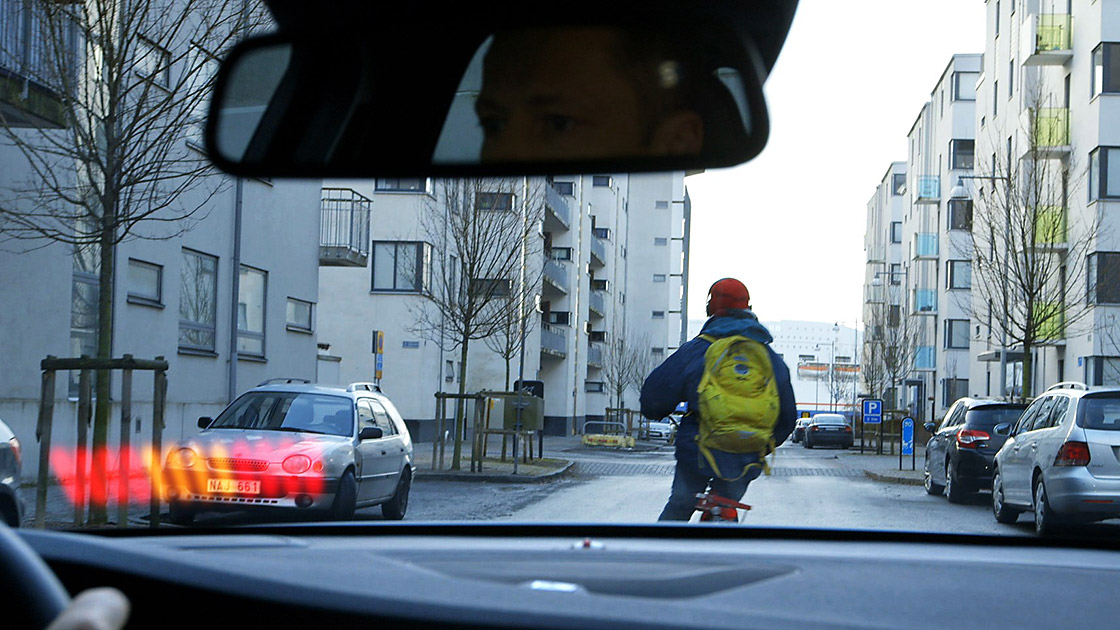
A growing number of vehicles are equipped with front crash prevention technology that can recognize the back of another vehicle and prevent a rear-end crash. If more of these systems could also recognize the backs of bicycles and bicyclists, they could prevent or mitigate a large portion of the crashes that kill people traveling on two wheels.
More than 3,300 bicyclists were killed in crashes in a five-year period from 2008 to 2012. Seventy-four percent of those deaths occurred when the bicyclist was struck by the front of a passenger vehicle, IIHS researchers found in a new study of bicyclist crash types relevant to the design of crash prevention systems. Of those crashes, the most common scenario, accounting for 45 percent, involved a vehicle traveling in the same direction as a bicycle and hitting it from behind, the researchers found. In contrast, pedestrian fatalities most commonly result from being struck while crossing a roadway.
The most common configuration among all bicycle crashes, fatal and nonfatal, was a bicycle crossing the path of a straight-moving vehicle. That scenario was the second-most common among bicyclist fatalities involving the front of a passenger vehicle, accounting for 22 percent of deaths. The third-most common fatal scenario involved a vehicle moving straight and a bike moving against traffic. Crashes involving turning vehicles and bicycles either crossing traffic or moving in line with traffic were the second- and third-most common crashes, respectively, but were not among the most common fatal crash scenarios.
The study was based on information on crashes from two federal databases, the Fatality Analysis Reporting System, a census of all fatal crashes, and the National Automotive Sampling System General Estimates System, which is a nationally representative sample of police-reported crashes.
Compared with the total number of people who die on the nation's roads, the number of bicyclists killed in crashes with motor vehicles is small, but it has been going up since 2010, when 621 were killed. In 2013, the last year for which data are available, the toll was 741.
"Biking has been enjoying a resurgence in recent years, as individuals and local governments seek a greener form of transportation that doesn't contribute to traffic congestion," says David Zuby, IIHS executive vice president and chief research officer. "The auto industry should keep bicyclists in mind as it continues to develop crash avoidance technology."
So far most efforts to improve bicyclist safety have focused on infrastructure. Cities have added bike lanes and cycle tracks and have delineated bike boxes at intersections to give bicyclists their own space to wait for a light to change. In many cases, safety was found to improve after such changes.
But even with improved infrastructure, it would be impossible to eliminate all conflicts between vehicles and bicycles. That's why it's important to incorporate bicyclist detection into front crash prevention systems.
Common crash scenarios:
Crashes involving bicyclists and fronts of passenger cars
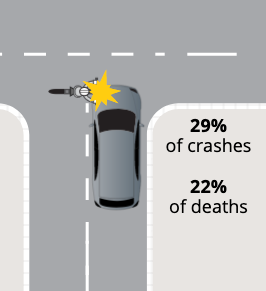
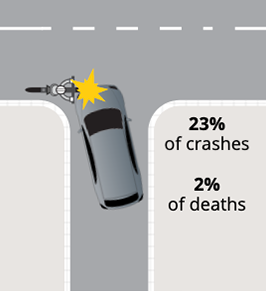
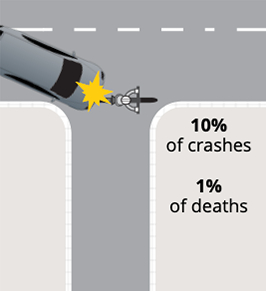
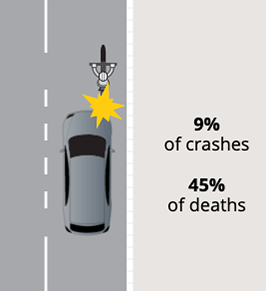
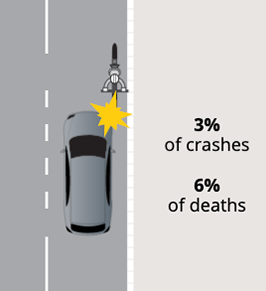
Addressing the most frequent deadly crash scenario — a vehicle striking a bicyclist from behind — requires relatively minor modifications to current front crash prevention systems, which are typically designed to prevent front-into-rear crashes between vehicles. Adding the capability to identify bicyclists to these systems could prevent or mitigate up to 32 percent of fatal bike crashes and up to 6 percent of all bike crashes.
Preventing crashes with bicyclists crossing traffic is more complex and has similar requirements to pedestrian detection systems, which must identify people as they step in front of the vehicle from the side of the road.
A handful of automakers are already adding bicyclist detection to their crash avoidance systems. Volvo and Subaru say their optional forward collision warning and automatic braking systems recognize bicyclists as well as pedestrians. BMW's Night Vision is designed to detect bicyclists, pedestrians and large animals in the dark and highlight them on a display, issuing an audible warning if necessary. All these systems have certain limitations, and it's not clear what percentage of bike crashes they actually prevent or mitigate.
The new study estimates the number of crashes that could potentially be addressed. Systems designed with the three most common deadly crash scenarios in mind have the potential to help mitigate or prevent up to 26 percent of bicycle crashes and 52 percent of fatal crashes. Systems that also address the remaining two most common crash modes could help mitigate or prevent up to a total of 47 percent of crashes and 54 percent of fatal crashes.
In addition to crash configurations, the study also looked at vehicle speed and time of day. Half of fatal crashes and nearly a quarter of all crashes involving the front of a vehicle occurred at night or during twilight. Most crashes occurred on roads with speed limits of less than 40 mph, but only about a third of fatal ones did. Currently, not all front crash prevention systems are effective in darkness or at high speeds, but they would need to be to have the biggest effect on bicyclist crashes and fatalities.